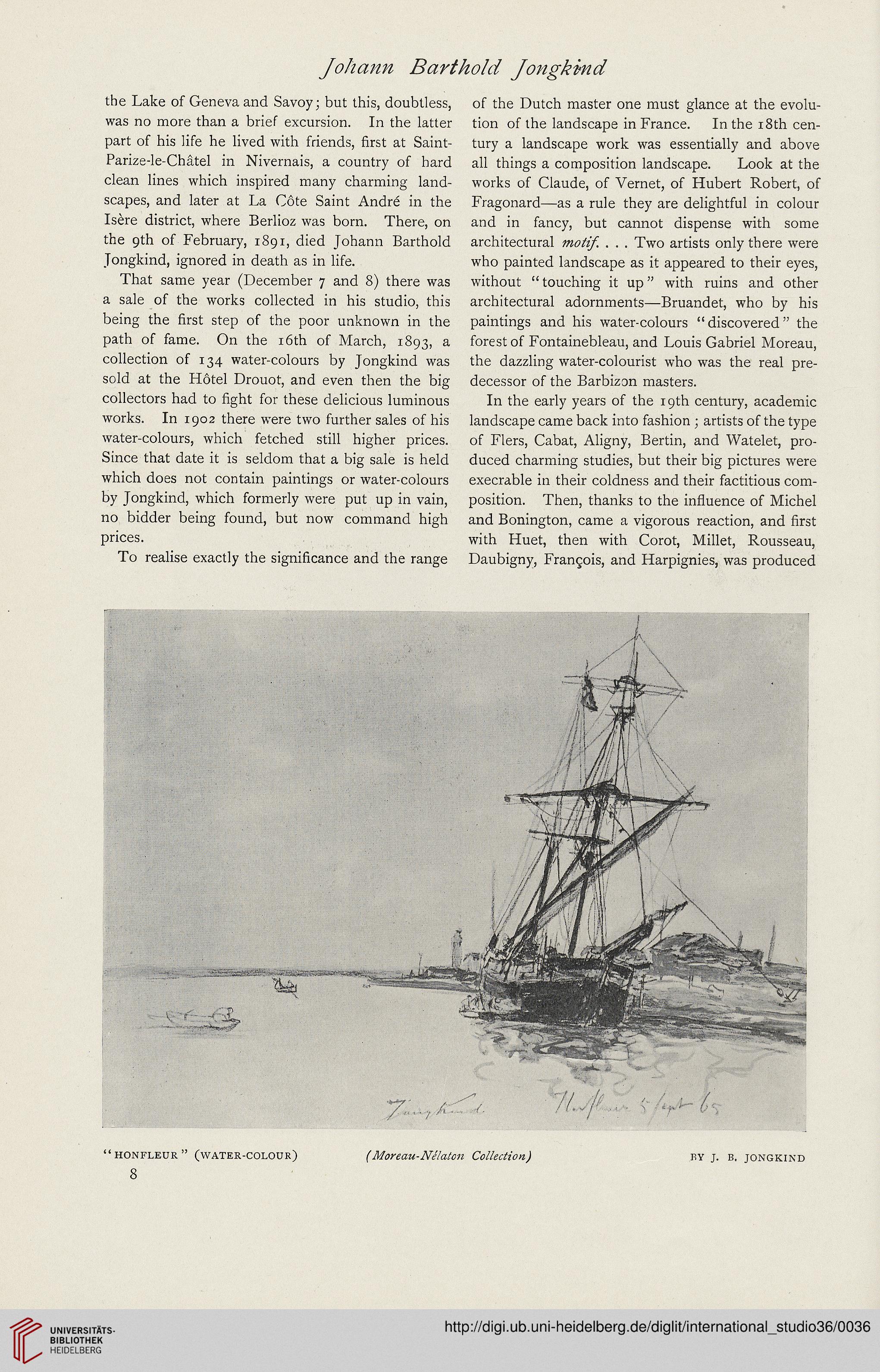the Lake of Geneva and Savoy; but this, doubtiess,
was no more than a brief excursion. In the iatter
part of his iife he lived with friends, hrst at Saint-
Parize-ie-Chatel in Nivernais, a country of hard
ciean iines which inspired many charming iand-
scapes, and later at La Cote Saint Andre in the
Isere district, where Beriioz was born. There, on
the Qth of February, 1891, died Johann Barthoid
Jongkind, ignored in death as in life.
That same year (December 7 and 8) there was
a saie of the works coilected in his studio, this
being the hrst step of the poor unknown in the
path of fame. On the 16th of March, 18Q3, a
coiiection of 134 water-colours by Jongkind was
soid at the Hotei Drouot, and even then the big
coiiectors had to hght for these delicious iuminous
works. In 1Q02 there were two further saies of his
water-coiours, which fetched stiil higher prices.
Since that date it is seidom that a big saie is heid
which does not contain paintings or water-coiours
by Jongkind, which formeriy were put up in vain,
no bidder being found, but now command high
prices.
To reaiise exactly the signihcance and the range
of the Dutch master one must giance at the evoiu-
tion of the iandscape inFrance. Inthe 18th cen-
tury a landscape work was essentially and above
ail things a composition landscape. Look at the
works of Ciaude, of Vernet, of Hubert Robert, of
Fragonard—as a rule they are deiightfui in coiour
and in fancy, but cannot dispense with some
architectural . . . Two artists oniy there were
who painted landscape as it appeared to their eyes,
without " touching it up" with ruins and other
architecturai adornments—Bruandet, who by his
paintings and his water-colours "discovered" the
forest of Fontainebieau, and Louis Gabriel Moreau,
the dazziing water-coiourist who was the real pre-
decessor of the Barbizon masters.
In the eariy years of the iQth century, academic
iandscape came back into fashion ; artists of the type
of Fiers, Cabat, Aiigny, Bertin, and Wateiet, pro-
duced charming studies, but their big pictures were
execrabie in their coidness and their factitious com-
position. Then, thanks to the inHuence of Michel
and Bonington, came a vigorous reaction, and hrst
with Huet, then with Corot, Miiiet, Rousseau,
Daubigny, Frangois, and Harpignies, was produced
"HONFLEUR" (WATER-COLOCR)
8
RY J. B. JONGKIND




